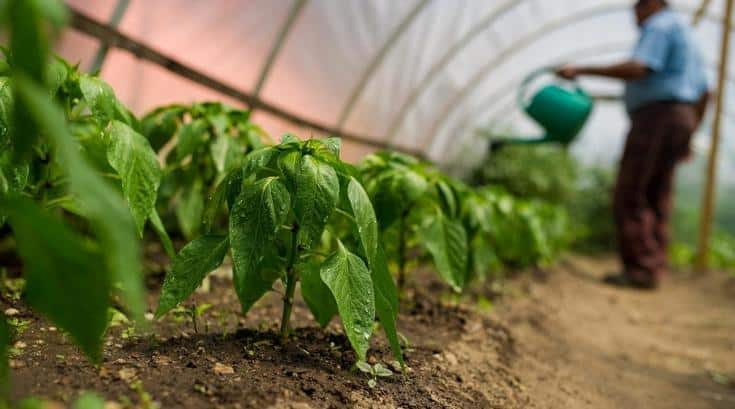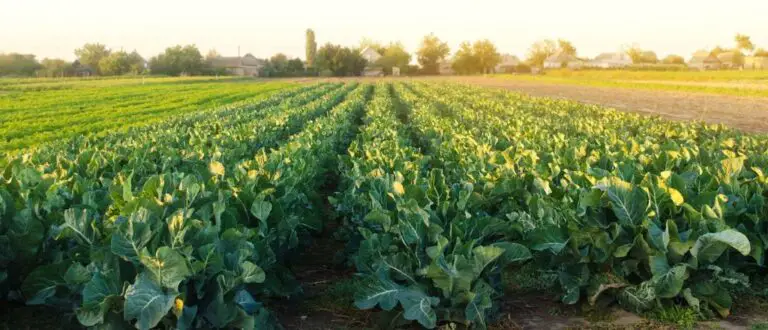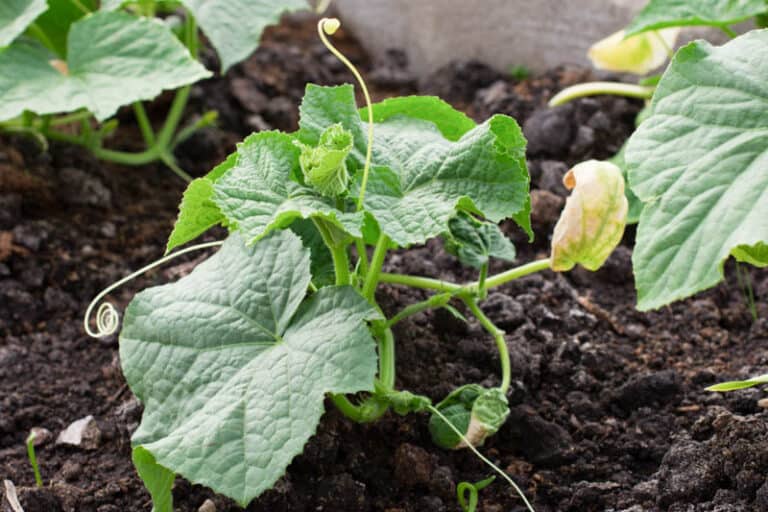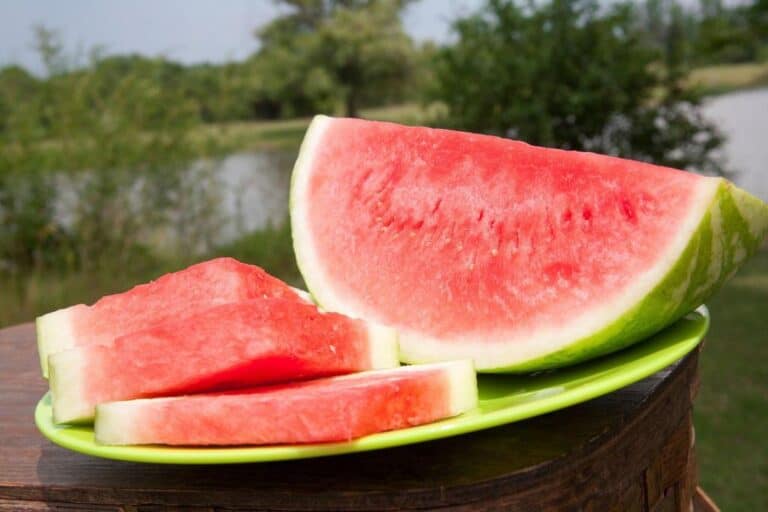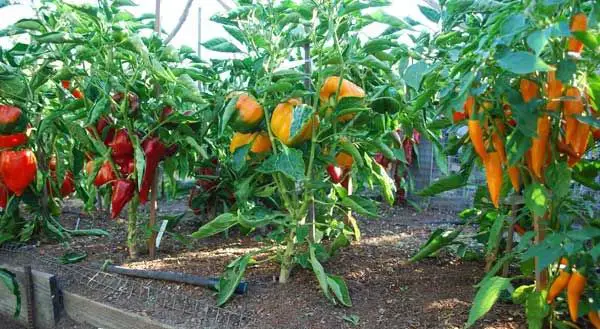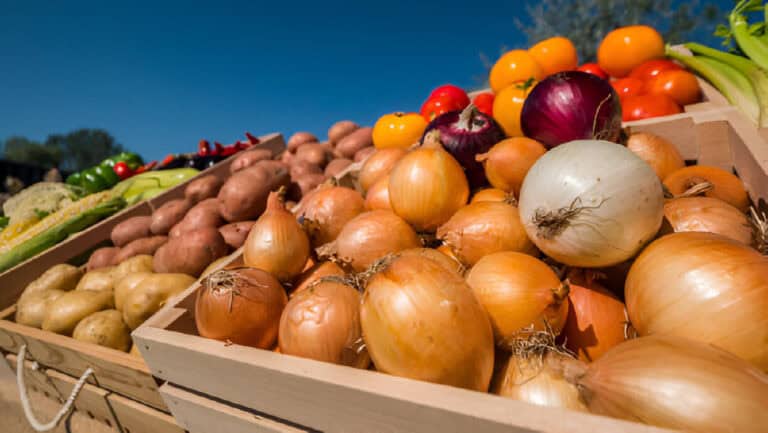When Do Brussel Sprouts Plants Start and Stop Producing?
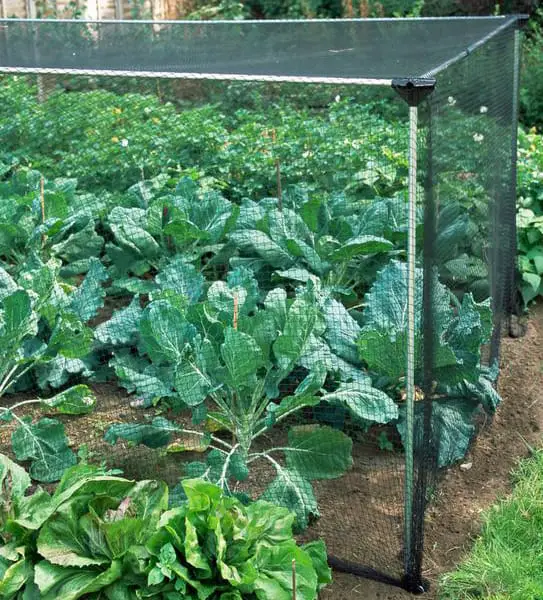
Welcome to the fascinating world of Brussels sprouts! These miniature cabbage-like vegetables have captured the hearts and taste buds of many with their unique flavor and nutritional value. If you’re an aspiring gardener or simply curious about the growth cycle of Brussels sprouts, you’ve come to the right place.
In this article, we’ll delve into the intriguing journey of Brussels sprouts plants, unraveling the mystery of when they begin and end their production. From the humble beginnings of seed germination to the glorious moment of harvest, we’ll walk you through each stage with detailed insights and practical tips.
Imagine the satisfaction of growing your own Brussels sprouts, plucking these delicate jewels from your garden and savoring their fresh, homegrown goodness. Whether you’re a seasoned green thumb or just starting your gardening adventure, understanding the timing of sprout production is crucial for a successful harvest.
So, let’s embark on this horticultural journey together and unlock the secrets of when Brussels sprouts plants start and stop producing. Get ready to cultivate, nurture, and ultimately enjoy the delicious rewards of your own thriving Brussels sprouts garden.
Introduction to Brussels Sprouts Plants and Their Growth Cycle
Brussels sprouts plants (Brassica oleracea var. gemmifera) belong to the Brassicaceae family, which also includes cabbage, broccoli, and kale. These plants are biennial, but they are typically grown as annuals for their edible sprouts. Brussels sprouts are known for their small, compact leafy buds that resemble miniature cabbages.
Brussels sprouts are a delightful and nutritious vegetable that can be grown in your own garden. To ensure a successful harvest, it’s essential to understand the growth cycle of Brussels sprouts plants.
Understanding the growth cycle of Brussels sprouts plants is crucial for successful cultivation. By knowing the different stages of their growth and the factors that influence their production, you can optimize your gardening efforts and enjoy a bountiful harvest.
Understanding the Growth Cycle of Brussels Sprouts
Brussels sprouts plants are biennial, which means they complete their life cycle in two years. However, for practical purposes, most gardeners treat them as annuals and harvest the sprouts in their first year. Let’s take a closer look at the different stages of growth.
Stage 1: Seed Germination and Seedling Development
It all starts with the humble seed. Brussels sprouts seeds are typically sown indoors or in a greenhouse about six to eight weeks before the last expected frost date. They require a soil temperature of around 70°F (21°C) for successful germination.
Once the seeds germinate, they develop into seedlings within a couple of weeks. At this stage, they require ample light and a slightly cooler environment to prevent legginess. It’s essential to provide them with proper care, including adequate water and nutrient-rich soil, to ensure their healthy growth.
Stage 2: Transplanting and Vegetative Growth
When the seedlings have developed their second set of true leaves, they are ready for transplanting outdoors. This usually occurs around four to six weeks after germination. Before transplanting, it’s advisable to harden off the seedlings by gradually exposing them to outdoor conditions over a period of 7 to 10 days.
Once transplanted, the Brussels sprouts plants enter a phase of vegetative growth. During this stage, they focus on developing a strong root system and lush foliage. Providing them with sufficient water, regular weeding, and occasional fertilization will promote healthy growth and vigor.
Stage 3: Sprout Formation and Maturation
As the plants continue to grow, small sprouts or buds begin to form in the leaf axils of the stem. These buds gradually enlarge and develop into the Brussels sprouts we love to harvest. The sprout formation typically starts from the bottom of the plant and progresses upward.
The time it takes for the sprouts to mature depends on various factors such as the variety, weather conditions, and cultural practices. On average, it takes about 90 to 180 days from transplanting for Brussels sprouts plants to reach full maturity. However, some early-maturing varieties can produce harvestable sprouts in as little as 80 days.
Stage 4: Harvesting and Post-Harvest Care
Harvesting Brussels sprouts is a gradual process, allowing you to pick the sprouts as they reach their desired size. Start harvesting from the bottom of the plant, gently twisting or cutting off the sprouts with a sharp knife. The sprouts at the top will continue to develop as you harvest the lower ones.
It’s important to note that cold weather enhances the flavor of Brussels sprouts. Many gardeners prefer to leave the plants in the ground even after the first frost, as long as the ground is not frozen. However, if you anticipate severe freezing or want to store the sprouts for an extended period, you can harvest the entire plant and store the sprouts in a cool, dark place for several weeks.
When Do Brussel Sprouts Plants Start and Stop Producing?
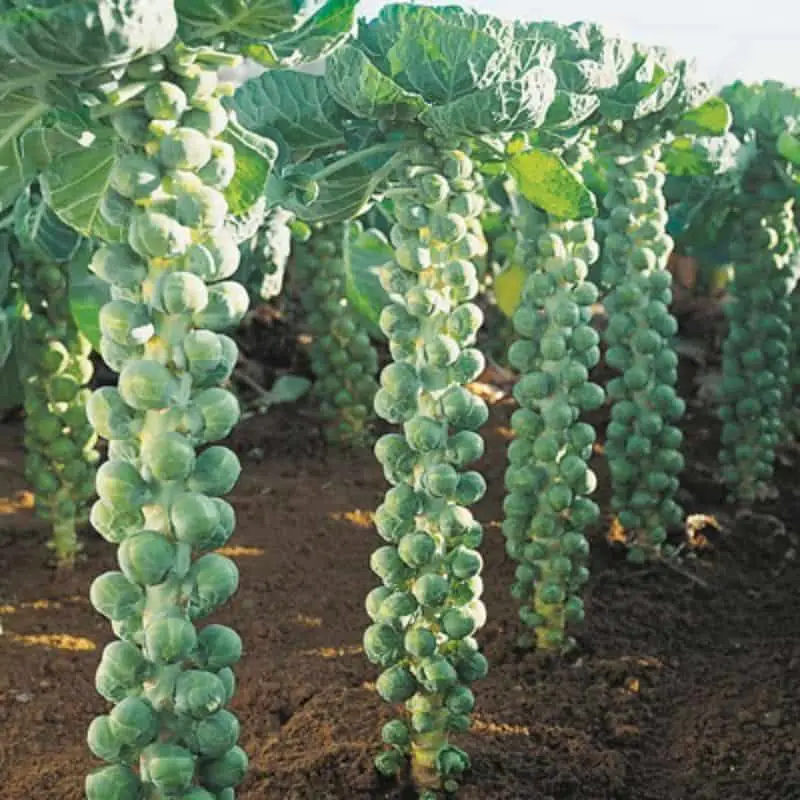
Brussels sprouts are a cool-weather crop that requires cool weather to grow. They can be planted in early spring or mid- to late summer for a crop that matures in the fall. The small heads mature best in cool and even lightly frosty weather.
Brussels sprouts grow tall first and don’t start producing sprouts until they reach almost full height. Each sprout grows in the leaf axil, or joint. Sprouts begin maturing from the bottom of the plant upward.
Brussels sprout formation will begin about 50 days after planting, and sprouts will begin to ripen from the ground up after 80-90 days.
Sprouts are ready to harvest when the tiny heads are firm, green, and 1 to 2 inches in diameter. Remove sprouts by twisting them until they break away from the plant. As you remove the lower sprouts, you can also remove the yellowing leaves; the plant continues to grow upward, producing more leaves and sprouts.
Full-grown sprouts keep well on the plant in cold weather, and the plant will withstand frost and can be harvested until a hard freeze strikes
Factors Influencing Brussels Sprouts Plant Production
Several factors play a vital role in the production of Brussels sprout plants. By understanding and managing these factors, you can optimize the growth and yield of your plants:
- Temperature and Climate Requirements: Brussels sprouts thrive in cool weather conditions. They prefer temperatures between 60°F and 70°F (15°C to 21°C) for optimal growth. Cold temperatures stimulate the formation of sprouts, while excessive heat can lead to poor development.
- Soil Conditions and Fertility: Brussels sprouts plants require well-drained soil that is rich in organic matter. A slightly acidic soil pH between 6.0 and 6.8 is ideal. Prepare the soil by incorporating compost or aged manure to improve its fertility and texture.
- Watering and Irrigation Needs: Adequate moisture is crucial for the growth of Brussels sprouts plants. They require consistent watering, especially during dry periods. Aim to keep the soil evenly moist, but avoid waterlogging, as it can lead to root rot.
- Pests and Diseases Affecting Production: Brussels sprouts can be susceptible to pests such as aphids, caterpillars, and flea beetles. Additionally, diseases like clubroot and black rot can impact plant health and yield. Implement preventive measures and consider using organic pest control methods to protect your plants.
Planting Brussels Sprouts for a Continuous Harvest
To enjoy a continuous harvest of Brussels sprouts throughout the growing season, consider the following planting techniques:
- Timing of Planting for Different Regions: The ideal time to plant Brussels sprouts depends on your geographical location and climate. In cooler regions, start seeds indoors 6-8 weeks before the last frost date. Transplant the brussel sprouts seedlings outdoors when the soil has warmed up and all danger of frost has passed. In milder regions, direct sow seeds in early spring or late summer for a fall harvest.
- Succession Planting Techniques: Brussels sprouts have a relatively long growing season, which makes them suitable for succession planting. To ensure a continuous harvest, stagger your plantings by sowing new seeds or transplanting seedlings every 2-3 weeks. This way, you can enjoy a steady supply of fresh sprouts throughout the season.
- Extending the Growing Season: If you want to extend the growing season and harvest Brussels sprouts well into winter, you can use protective measures. Consider using row covers or cold frames to shield the plants from frost and cold temperatures. This can help prolong the harvest and allow you to enjoy fresh sprouts even when the weather turns chilly.
Signs of Brussels Sprouts Plant Readiness for Harvest
Determining when Brussels sprouts are ready for harvest is crucial to ensure optimal flavor and texture. Keep an eye out for the following signs that indicate the sprouts are mature and ready to be harvested:
- Indications of Mature Sprouts: Mature sprouts are firm, compact, and tightly formed. They typically measure around 1 to 1.5 inches (2.5 to 3.8 cm) in diameter. The lower sprouts on the plant usually mature first, while the upper ones continue to develop.
- Monitoring Plant Development: Regularly monitor the growth of the sprouts by observing their size and color. Gently squeeze the sprouts to check for firmness. They should have a solid texture without any signs of softness or sponginess.
- Harvesting Techniques: To harvest Brussels sprouts, twist or cut the sprouts off the stem using a sharp knife or garden shears. Start at the bottom of the plant and work your way up. Remove any yellowing or damaged leaves during harvest. It’s best to harvest the sprouts when they are at their peak size but before they become loose or begin to open.
By keeping a close eye on the development of your Brussels sprouts plants and understanding the signs of readiness for harvest, you can ensure a flavorful and satisfying yield.
Optimal Conditions for Brussels Sprouts Production
To maximize your Brussels sprouts yield, it’s crucial to provide them with optimal growing conditions. Here are some key factors to consider:
- Sunlight: Brussels sprouts need a lot of full sun, which means they require at least six to eight hours of direct sunlight per day. Choose a location in your garden that receives ample sunlight to ensure proper growth and development.
- Soil: Brussels sprouts prefer well-draining soil that is rich in organic matter. Before planting, amend the soil with compost or well-rotted manure to improve its fertility and drainage. A slightly acidic soil with a pH level between 6.0 and 7.5 is ideal for Brussels sprouts.
- Watering: Consistent and adequate watering is essential for Brussels sprouts plants. They require about 1 inch of water per week, either through rainfall or irrigation. Ensure that the soil remains evenly moist but not waterlogged. Mulching around the plants can help retain moisture and prevent weed growth.
- Fertilization: Brussels sprouts are heavy feeders and benefit from regular fertilization. Before transplanting, incorporate a balanced organic fertilizer into the soil. Additionally, you can apply a nitrogen-rich fertilizer during the growing season to promote healthy foliage and sprout development.
- Spacing: Brussels sprouts plants need enough space to grow and spread their foliage. Provide them with adequate spacing of about 24 to 36 inches between plants and 36 inches between rows. This ensures proper air circulation, reduces the risk of disease, and allows the plants to reach their full potential.
- Pest and Disease Control: Brussels sprouts are susceptible to certain pests and diseases, including aphids, cabbage loopers, and powdery mildew. Monitor your plants regularly and take necessary measures to control and prevent infestations. This can include using organic insecticides or implementing cultural practices such as crop rotation.
- Staking: As the Brussels sprouts plants grow taller and heavier with the developing sprouts, they may require staking for support. This prevents them from toppling over under their own weight and protects them from wind damage.
By providing the optimal growing conditions and following proper care practices, you can ensure healthy Brussels sprouts plants and a bountiful harvest.
Common Challenges and Solutions in Brussels Sprouts Production
Brussels sprouts cultivation comes with its share of challenges. By identifying and addressing these challenges, you can optimize your plant’s health and productivity. Here are some common challenges and their solutions:
- Pests and Diseases Management: Brussels sprouts are susceptible to pests like aphids, cabbage worms, and flea beetles. Implement integrated pest management techniques, such as hand-picking pests, using insecticidal soaps or organic insecticides, and attracting beneficial insects to control pest populations. Additionally, practice crop rotation to minimize the risk of disease transmission, and promptly remove and destroy any infected plant material.
- Nutrient Deficiencies and Amendments: Brussels sprouts require adequate nutrients for healthy growth. Common nutrient deficiencies include nitrogen, phosphorus, and potassium. Regularly test the soil and provide appropriate amendments to address any deficiencies. Applying a balanced organic fertilizer before planting and side-dressing during the growing season can help ensure optimal nutrient levels.
- Environmental Stressors and Protection Measures: Brussels sprouts can suffer from environmental stressors such as heatwaves, extreme cold, or strong winds. Provide protection during extreme weather conditions by using row covers, windbreaks, or temporary shading. These measures can help mitigate stress and maintain plant health.
Pruning and Maintenance Practices for Brussels Sprouts Plants
Proper pruning and maintenance practices contribute to the overall health and productivity of Brussels sprouts plants. Consider the following techniques:
- Removing Yellowing Leaves: Regularly inspect the plants and remove any yellowing or diseased leaves. This helps improve air circulation and reduces the risk of fungal diseases.
- Controlling Plant Height: Brussels sprouts can grow quite tall, which may make them susceptible to toppling over. To control their height, pinch or cut off the top of the main stem when the plants reach the desired height. This encourages lateral growth and stronger stem development.
- Supporting Plants for Stability: As Brussels sprouts plants grow, they can become top-heavy. Support them by using stakes or cages to prevent them from bending or falling over. Gently tie the main stem to the support structure using soft plant ties or twine. This provides stability and prevents damage to the plants during windy conditions or when laden with sprouts.
Extending the Brussels Sprouts Plant Production Period
If you want to enjoy Brussels sprouts for an extended period, consider the following techniques to prolong Brussels sprouts production:
- Overwintering Techniques: In regions with mild winters, you can overwinter Brussels sprouts plants for an early spring harvest. Before the first frost, cut off the top portion of the plant, leaving a few inches of the stem. Cover the plants with a layer of straw or mulch to protect them from freezing temperatures. In spring, new sprouts will form on the existing stem.
- Using Protective Coverings: Extend the growing season by using protective coverings such as row covers, cold frames, or hoop houses. These structures help trap heat, provide insulation, and protect the plants from frost. They allow you to start planting Brussels sprouts earlier in the season and continue harvesting them later into fall or even winter.
- Growing in Containers: Brussels sprouts can also be grown in containers, which allows for more flexibility in managing their growth and extending the production period. Choose large containers with good drainage. Position them in a sunny location and provide regular watering and fertilization. You can move the containers to a sheltered area or indoors during extreme weather conditions.
Harvesting and Post-Harvest Handling of Brussels Sprouts
Knowing the right time to harvest and properly handling Brussels sprouts after harvest ensures the best flavor and quality:
- Proper Harvesting Techniques: Harvest Brussels sprouts when they reach maturity but before the leaves turn yellow or the brussel sprouts start to loosen. Start by picking the lower sprouts first, as they mature earlier. Twist or cut the sprouts from the stem using a sharp knife or pruners. Leave the upper part of the stem intact to allow the smaller sprouts to continue maturing.
- Storage and Preservation Methods: After harvesting, remove any damaged or discolored leaves from the sprouts. Store them in a perforated plastic bag or container in the refrigerator’s crisper drawer. Brussels sprouts can stay fresh for up to a week when stored properly. If you have a large harvest, blanch and freeze the sprouts for longer-term storage.
- Utilizing Harvested Brussels Sprouts: Brussels sprouts are versatile and can be used in various delicious recipes. Roast them with olive oil and seasonings, sauté them with garlic and bacon, or add them to hearty soups and stir-fries. You can also enjoy them raw in salads by thinly slicing or shredding the sprouts.
In conclusion, understanding the optimal conditions for Brussels sprouts production, addressing common challenges, implementing pruning and maintenance practices, and utilizing techniques to extend the production period are crucial for a successful harvest.
By mastering the art of harvesting and properly handling the sprouts, you can fully enjoy the deliciousness and nutritional benefits that Brussels sprouts offer. So, roll up your sleeves, prepare your garden, and get ready to savor the delectable rewards of growing your own Brussels sprouts.
Summary
In summary, Brussels sprouts plants start their journey from seed germination and seedling development, progressing to transplanting and vegetative growth. As the plants mature, sprouts form and gradually reach harvestable size. The time from transplanting to full maturity can range from 90 to 180 days, depending on various factors.
To grow successful Brussels sprouts, make sure to provide them with ample sunlight, well-draining soil rich in organic matter, consistent watering, and regular fertilization. Proper spacing, pest and disease control, and staking when necessary are also important for optimal growth.
Now that you have a better understanding of the growth cycle of Brussels sprouts and the conditions required for their successful production, you can embark on your gardening journey with confidence. Enjoy the process of growing your own nutritious and delicious Brussels sprouts right in your backyard!
FAQs
What are the signs that Brussels sprouts are ready to harvest?
Brussels sprouts are ready to harvest when the sprouts are firm, green, and reach about 1 to 1.5 inches in diameter. Start harvesting from the bottom of the plant, and the lower sprouts will be ready first. Harvesting can continue as long as the sprouts maintain their quality and flavor.
Can you grow Brussels sprouts year-round?
Brussels sprouts are cool-season crops and prefer temperatures between 45°F and 75°F (7°C to 24°C). They can be grown in both spring and fall, but it can be challenging to grow them during hot summers or freezing winters. Plan your planting accordingly to ensure optimal growth conditions.
How do I protect Brussels sprouts from pests and diseases?
To protect Brussels sprouts from common pests like aphids and cabbage loopers, you can use insecticidal soaps or organic insecticides. Regularly inspect the plants for signs of disease, such as powdery mildew or clubroot. Practicing crop rotation, providing adequate spacing between plants, and maintaining proper sanitation in the garden can also help prevent pest and disease issues.
When is the best time to plant Brussels sprouts?
The best time to plant Brussels sprouts depends on your location and climate. For spring planting, start seeds indoors or in a greenhouse about six to eight weeks before the last expected frost date. For fall planting, start seeds indoors in early to mid-summer and transplant them outdoors four to six weeks before the first expected frost.
Can I grow Brussels sprouts in containers or pots?
Yes, Brussels sprouts can be grown in containers or pots, provided they have sufficient depth and good drainage. Choose a large container that is at least 18 inches deep to accommodate the deep root system of the plants. Ensure the container receives full sun and provide regular watering and fertilization to support their growth.
How long can harvested Brussels sprouts be stored?
Harvested Brussels sprouts can be stored for several weeks if stored properly. Place the harvested sprouts in a perforated plastic bag or airtight container and store them in the refrigerator’s crisper drawer. They can stay fresh for up to three weeks. Alternatively, you can blanch and freeze Brussels sprouts for longer-term storage, which can last for around 10 to 12 months.
What are the best companion plants for Brussels sprouts?
Good companion plants for Brussels sprouts include beets, carrots, onions, and herbs like thyme and rosemary. These plants can help deter pests, attract beneficial insects, and improve overall garden health when planted together.
Why are the Brussels sprouts plants not forming sprouts?
Several factors can contribute to Brussels sprouts plants not forming sprouts. It could be due to inadequate sunlight, improper fertilization, insufficient spacing between plants, high temperatures, or planting the wrong variety. Ensure that the plants receive enough sunlight, provide proper nutrition, and choose a suitable variety for your growing conditions.
Can I harvest Brussels sprouts after the first frost?
Yes, many gardeners prefer to leave Brussels sprouts plants in the ground even after the first frost. Cold weather enhances their flavor. As long as the ground is not frozen, you can continue harvesting sprouts as they mature. However, if severe freezing is expected, it’s advisable to harvest the entire plant and store the sprouts in a cool place.
How can I improve the flavor of Brussels sprouts?
To improve the flavor of Brussels sprouts, you can harvest them after a light frost. Cold temperatures convert some of the starches into sugars, resulting in sweeter-tasting sprouts. You can also enhance their flavor by roasting them with olive oil, garlic, or balsamic vinegar, or by adding herbs and spices during cooking.
Are Brussels sprouts suitable for container gardening?
While Brussels sprouts can be grown in containers, they require large and deep containers to accommodate their root system. Choose varieties specifically bred for container gardening and ensure the container is placed in a sunny location. Adequate watering, regular fertilization, and proper support for taller varieties are important for successful Brussels sprouts cultivation in containers.
Can I save Brussels sprouts seeds for planting in the next season?
Yes, you can save Brussels sprouts seeds for planting in the next season. Allow a few sprouts to fully mature and form yellow flowers. Once the flowers fade, seed pods will develop. Harvest the pods when they turn brown and dry, then remove the seeds. Store the seeds in a cool, dry place in airtight containers for the next planting season.

